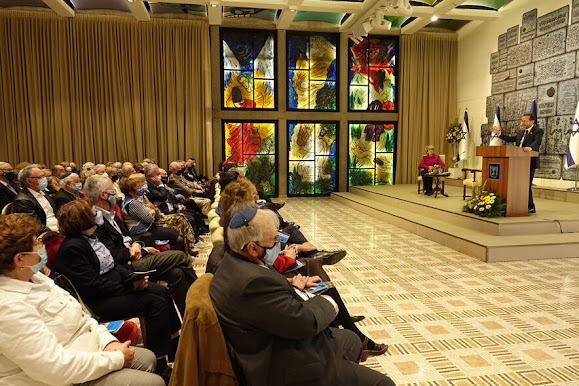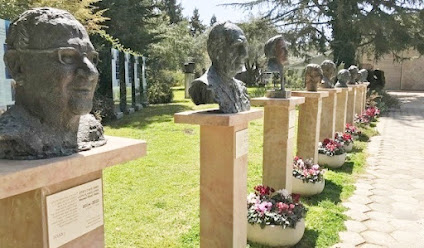The
Taliban regime, which swept away Afghanistan’s government on August 15, 2021,
is far from secure. It is facing determined
resistance from two main sources: contingents
of the fallen Afghan republic, which are recruiting guerrilla fighters from
among the hundreds of thousands of Western-trained security forces that served
the former government but lost their jobs after the Taliban takeover, and a group calling itself ISIS-K, or
sometimes ISKP (Islamic State in Khorasan Province).
In what seems to be an
uncoordinated offensive, disaffected elements of the previous Afghan
administration are claiming responsibility for attacking the Taliban in many
provinces across Afghanistan. Anti-Taliban
groups “are popping up everywhere in Afghanistan,” a former foreign ministry
official is reported to have said. “They were just waiting to see how things
would go under the Taliban.” The official said former government leaders
involved in the resistance are trying to unite behind a vision in ongoing
negotiations.
There are also signs
that former Afghan Army leaders are trying to rally their troops. Former
Lieutenant General Sami Sadat fought some of the most challenging battles
against the Taliban last year. He has said:
“The Taliban has left us no choice but to pick up our weapons again to win back
our freedom.” Former leaders of the West-backed republic hope the rebellion
will eventually turn into a national uprising.
A former official of the
Afghan foreign ministry who is close to the emerging resistance is certain of
it. He is reported as saying: “I am sure
we will see a much bigger uprising against the Taliban.”
One of the most visible anti-Taliban groups is the National Resistance Front, led by Ahmad Massoud.
Massoud is the son of the Northern Alliance
leader Ahmad Shah Massoud, who prevented the Taliban from overrunning
Afghanistan in the mid-1990s, following the Soviet withdrawal, until he was
killed by Al-Qaeda assassins two days before 9/11 in 2001.
Massoud’s close ally is
former vice-president Amrullah Saleh, and their supporters have been launching
sporadic attacks against the Taliban in remote Panjshir valleys. Regular
attacks are launched against the Taliban in Andrab, a high-altitude valley in
the northern province of Baghlan, by supporters of former Interior minister,
Masud Andrai. Attacks have also been
reported in recent weeks in seven other provinces.
Some reports suggest that
supporters of late anti-Taliban police commander Abdul Raziq are ready to join
the resistance in Kandahar. Former defense minister Bismillah Khan, ex-General
Staff chief Yasin Zia, and militia leader Abdul Ghani Alipur are other notable
names in the resistance.
As for ISIS-K, shortly
after the Taliban took power in August 2021 its full resurgence was proclaimed
to the world by way of the suicide bombing outside Kabul International airport,
followed by another at the nearby Baron Hotel — explosions that killed 170
civilians and 13 US service personnel. The
group had already launched no less than 77 attacks in the first four
months of 2021, demonstrating its intention to inflict mass casualty and destabilize
Afghanistan’s already precarious security situation.
Early in March 2022 the
UN issued its first major human rights report since the Taliban seized power. Covering the period from August 2021 to the
end of February, it said that 397 civilians had been killed, 80% of them in
attacks by the ISIS-K group.
ISIS-K is the
Afghanistan affiliate of Islamic State in Iraq and Syria (ISIS). It emerged in January 2015, nearly two years after
ISIS first declared its caliphate. Back then, the group’s aims include toppling
the Pakistani government, punishing the Iranian government for being a “vanguard”
of Shia Islam, and “purifying” Afghanistan by dislodging the Taliban as the
main jihadi movement.
Over the years, ISIS-K’s
anti-Pakistan and anti-Iran priorities have been overtaken by a more pragmatic
agenda that concentrates on violent opposition to the Taliban and Afghani religious
minorities. Now ISIS-K’s strategic objective
is to bring Afghanistan within the Islamic caliphate envisaged by the ISIS
movement.
On April 21 explosions
inside the Seh Dokan mosque in Mazar-i-Sharif, the capital of Balkh province in
northern Afghanistan, killed at least 12 worshipers and wounded scores more. ISIS-K claimed responsibility on its Telegram
account, posting: “The soldiers of the caliphate managed to get a booby-trapped
bag” inside the mosque, and once the place was packed with worshipers, detonated
it from afar.
 One week later, missiles
targeted vehicles in Mazar-i-Sharif. Two
explosions within minutes of each other killed at least nine people and wounded
13.
One week later, missiles
targeted vehicles in Mazar-i-Sharif. Two
explosions within minutes of each other killed at least nine people and wounded
13.
ISIS-K sees the Taliban
as an irreconcilable enemy that needs to be defeated militarily. The enmity between
the two organizations stems from their sectarian differences. ISIS-K subscribes
to the Jihadi-Salafism ideology, while the Taliban adhere to the Hanafi madhab,
a school of religious law noted for its reliance on systematic reasoning. Moreover ISIS-K, in line with its caliphate
philosophy, fiercely rejects nationalism, while the Taliban is strictly
concerned with ruling Afghanistan.
The Taliban regime in
Afghanistan is still unrecognized by the international community. Most of the development aid which had been
sustaining the previous Afghan government has ceased, and the country is in the
midst of an economic crisis. Since the takeover at least half a million Afghans
have lost their jobs. It is estimated
that by mid-2022 up to 97% of people could be living below the poverty line.
Human Rights Watch has
reported executions and enforced disappearances of former government officials. Patricia Gossman, an associate director,
said: “Revenge killings, crushing women’s rights, strangling the media – the
Taliban seem determined to tighten their grip on society, even as the situation
grows increasingly unstable.”
The UN resolved on March
17 to re-establish its presence in Afghanistan.
UNAMA (the UN mission to Afghanistan) will respond to the immediate
humanitarian and economic crisis. The UN resolution also obliges UNMA to work
towards establishing peace and stability in the country. Unfortunately, the new remit provides no
indication of how to reconcile the religious objectives of ISIS-K, the
political purposes of the anti-Taliban factions, and the utter determination of
the Taliban to retain its grip on power.
Published in the Jerusalem Post and the Jerusalem Post on-line, 19 May 2022
https://www.jpost.com/opinion/article-707071
Published in Eurasia Review, 20 May 2022:
https://www.eurasiareview.com/20052022-confronting-the-taliban-oped/
Published in the MPC Journal, 22 May 2022:
https://mpc-journal.org/wp-admin/post.php?post=13185&action=edit
Published in Jewish Business News, 20 May 2022:
https://jewishbusinessnews.com/2022/05/20/confronting-the-taliban/





.jpg)


